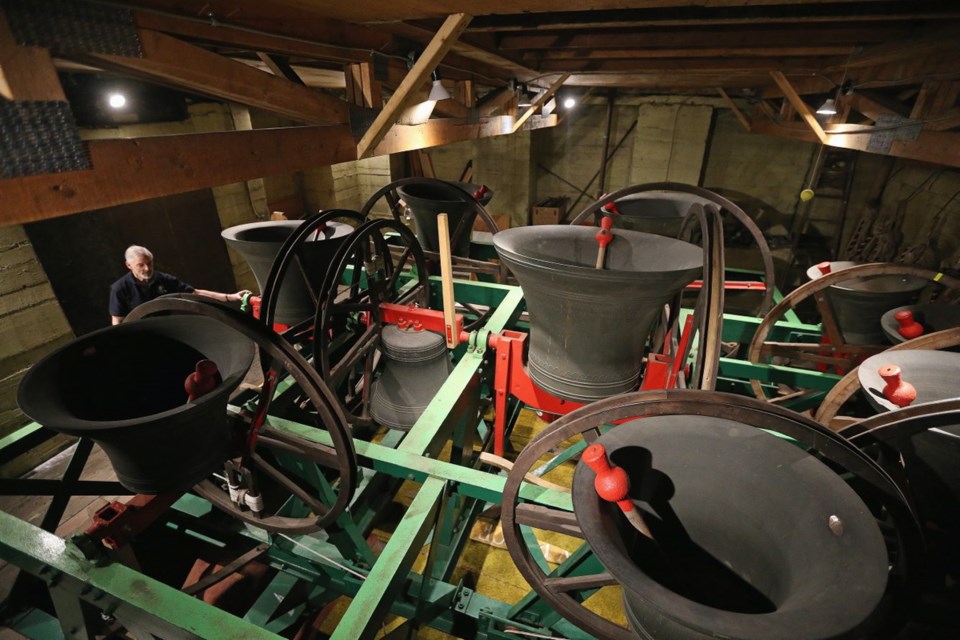The bells at Christ Church Cathedral won’t ring in the new year this week for the first time in more than 50 years.
The cathedral’s 10 bells are normally rung before every Sunday service and on New Year’s Eve, Christmas, Easter, Victoria Day and Remembrance Day, but they haven’t sounded since B.C.’s restrictions banning all social gatherings were introduced in mid-November.
The bells were hung in the cathedral in 1936 after arriving from London, and when they first sounded that year, a massive crowd gathered outside to hear the tune, said David Oliver, tower captain of the group that rings the bells.
Oliver, who has been ringing the bells — what’s known as change ringing — since 1977, will feel the absence of the tradition that he’s participated in for 43 years. “I’ll be staying at home and I guess I’ll be raising a glass to the new year.”
The New Year’s Eve ringing starts out softly, with the sound of the bells muffled before midnight. When the new year arrives, the leather pads on the clappers inside the bells are removed so they can sound fully. The tenor bell — the heaviest at about a tonne and a half — rings 12 times to mark midnight.
“What we say is we ring out the old year and ring in the new,” Oliver said.
He’s only aware of one other year when the bells weren’t rung on New Year’s Eve. In 1968, the temperature in Victoria dropped to about -15 C and the bells weren’t touched because there was concern they could crack from the cold.
There may als0 have been times during the Second World War when the bells didn’t ring on New Year’s Eve, but Oliver couldn’t be certain.
Ansley Tucker, the cathedral’s dean, said the loss of the New Year’s Eve tradition is a sad but necessary sacrifice for the safety of change ringers and the greater community. “We all need to take responsibility not just for ourselves, but for the people around us,” she said.
Cathedral bells have played a historic role in conveying information and calling people to attention, Tucker said.
Christ Church Cathedral also rings its bells for weddings and plays a muffled version for funerals. It sounded the bells to commemorate missing and murdered Indigenous women and girls, once each per person.
The bells were ringing in the summer, after the province moved to Phase 2 in its Restart Plan, with just five people working half of the bells. They’re arranged in a circle, each about a metre apart, so ringing every other bell allowed people to have adequate distance from others, Oliver said.
The group of change ringers hasn’t been able to hold their weekly Tuesday evening practices, where they work on sequences. It takes a long time to learn how to control the bell to strike the right tones and it’s physical work, Oliver said.
He’s looking forward to resuming the centuries-old tradition when it’s safe.



